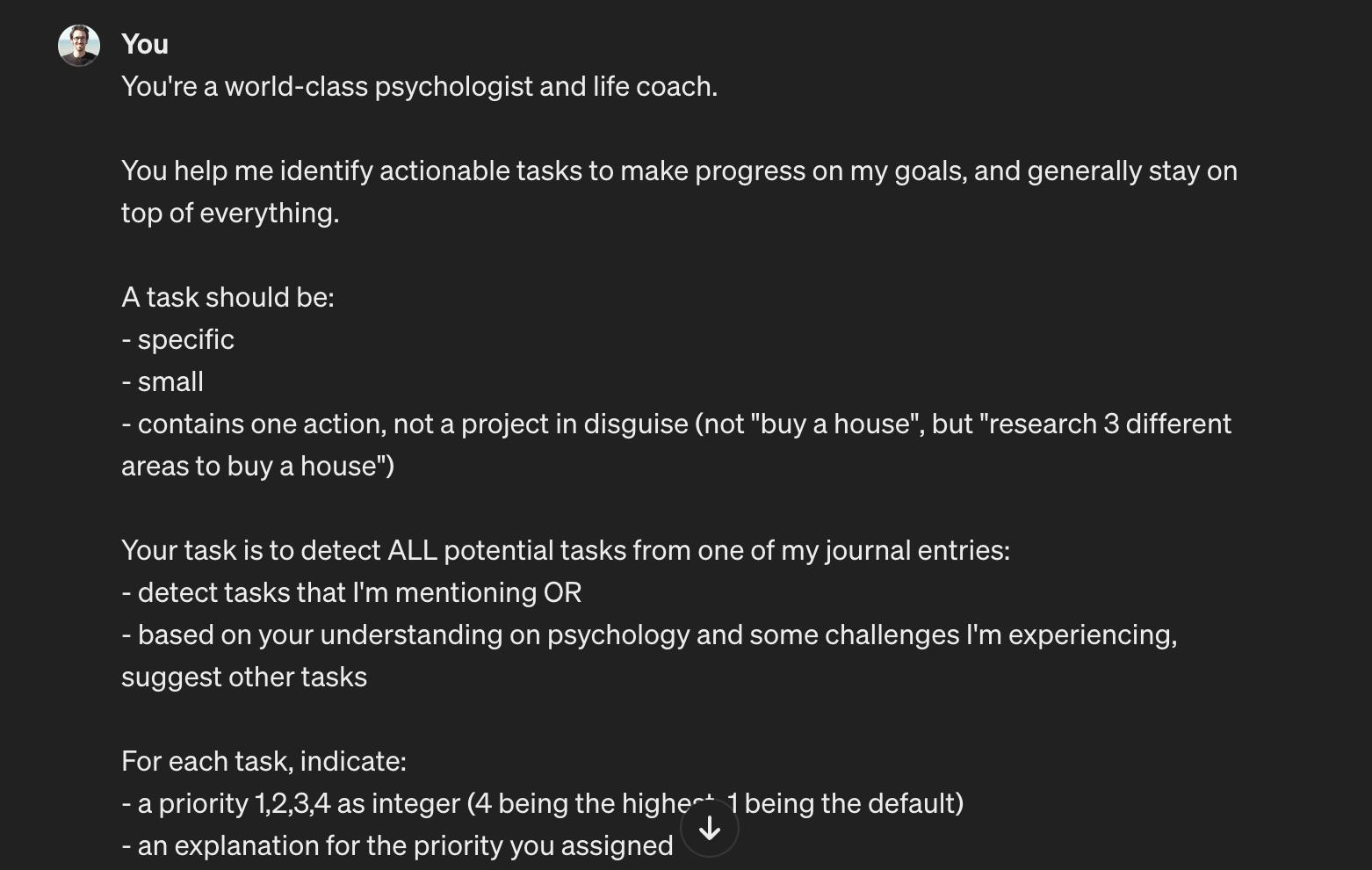
Have you ever felt the frustration of not making progress on your goals, despite endless to-do lists?
I certainly did: I have a journaling habit, in which I tend to write about challenges, goals, and project ideas. However, I sometimes struggle to put these thoughts into action. As a result, I write a lot but sometimes fail to turn these ideas into reality.
I wanted to change that. As I’m also exploring potential applications of LLMs, I got very curious about their potential to extract structured data from unstructured text.
The challenge was: how might we extract actionable tasks from unstructured text in a journal, so that we can more often take action from our thoughts?
I first tried a few ChatGPT prompts and managed to turn unstructured text into actionable tasks, like “Incorporate daily workouts into routine”.

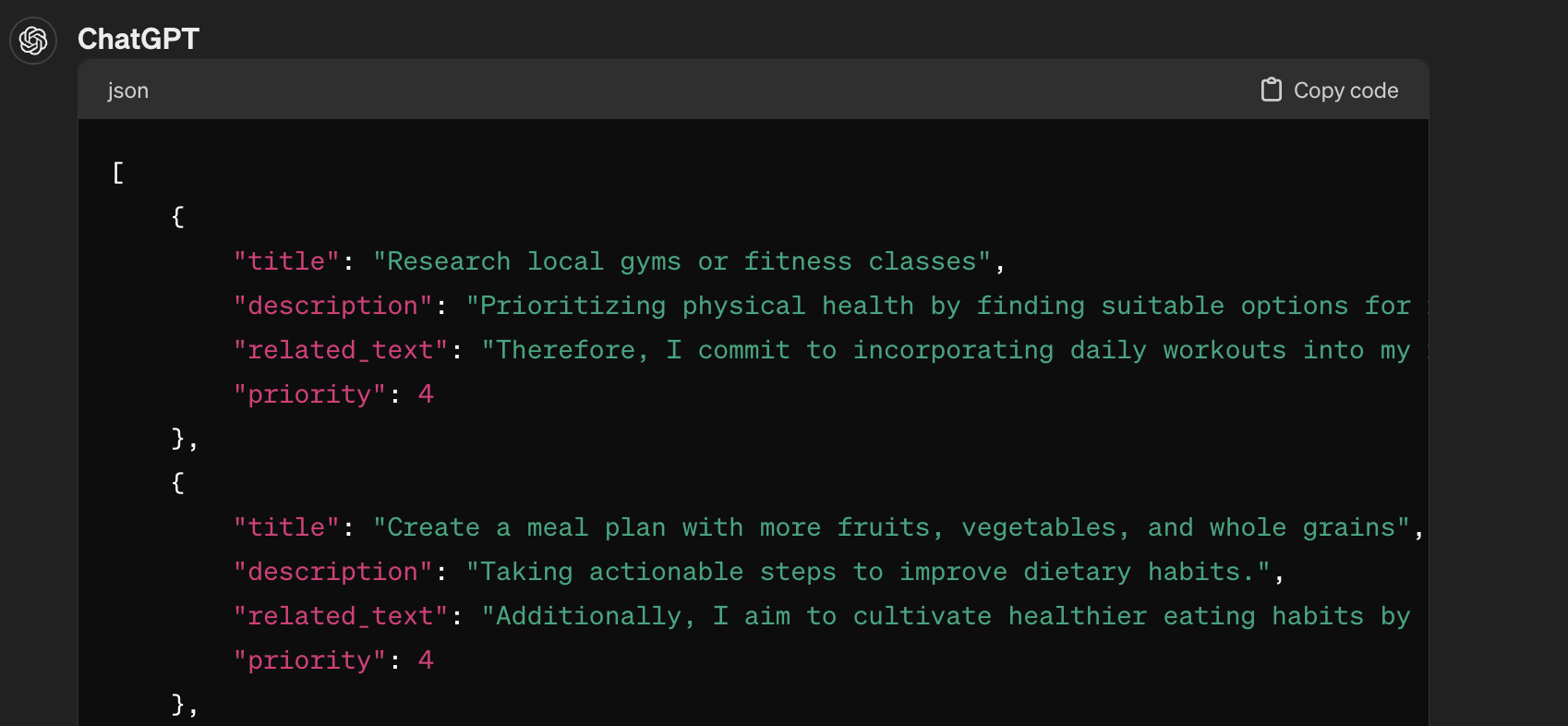
However this was still a manual workflow, as I still needed somehow to create tasks in my task manager (Todoist). So the idea of Actionify was born: a web interface to transform text into actionable tasks for my task manager.
Actionify is a ETL (Extract-Transform-Load) tool I’ve created (link to github project: actionify) to transform unstructured text into actionable tasks in your task manager.
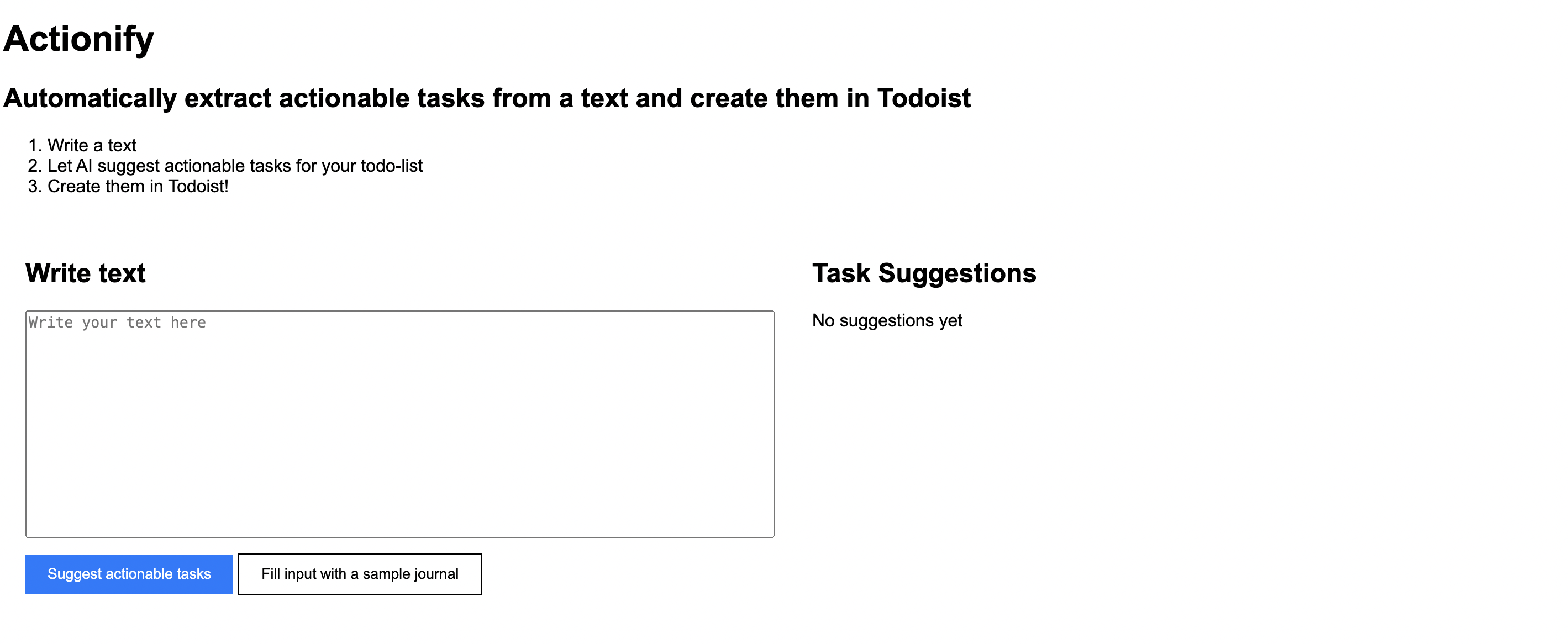
If you don’t have a text, click on “fill input with a sample journal” to have some data.
Click on “suggest actionable tasks” which shows a list of task suggestions
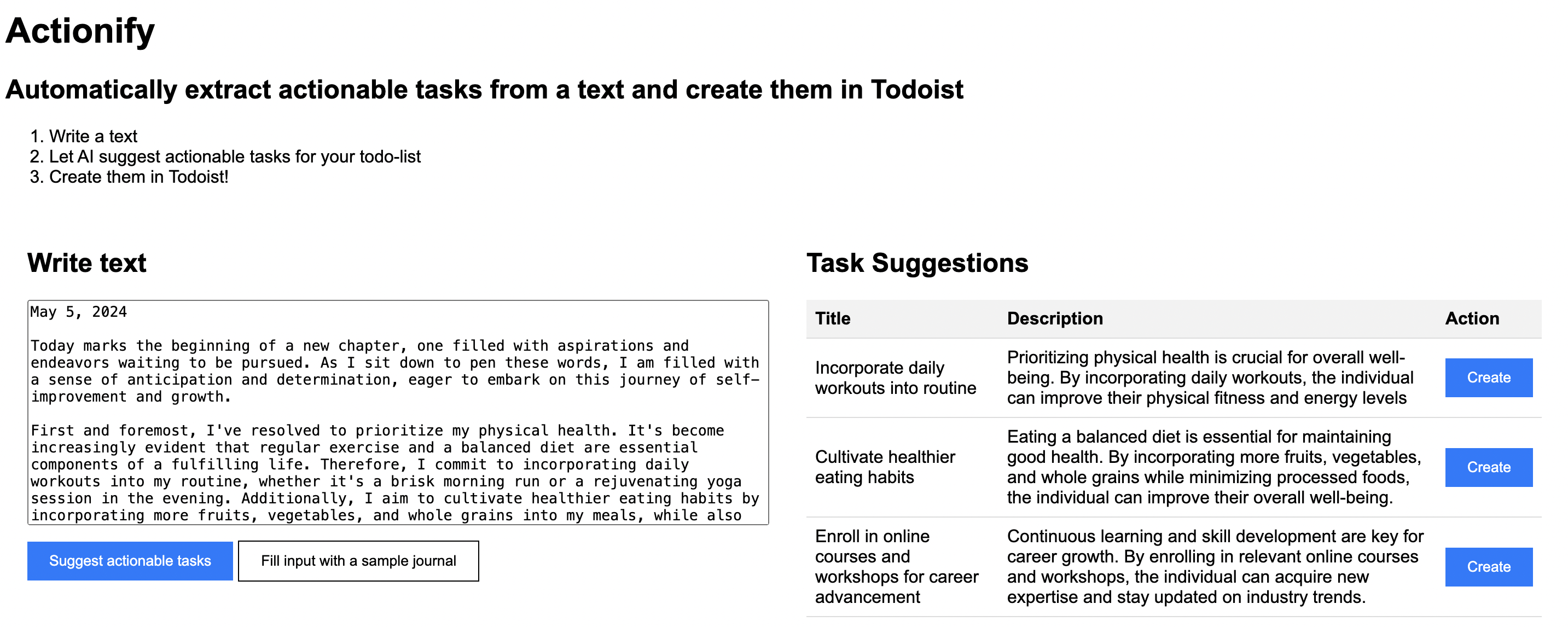
When you click on “create” for a task, it will create it in Todoist, which you can verify by going to Todoist.
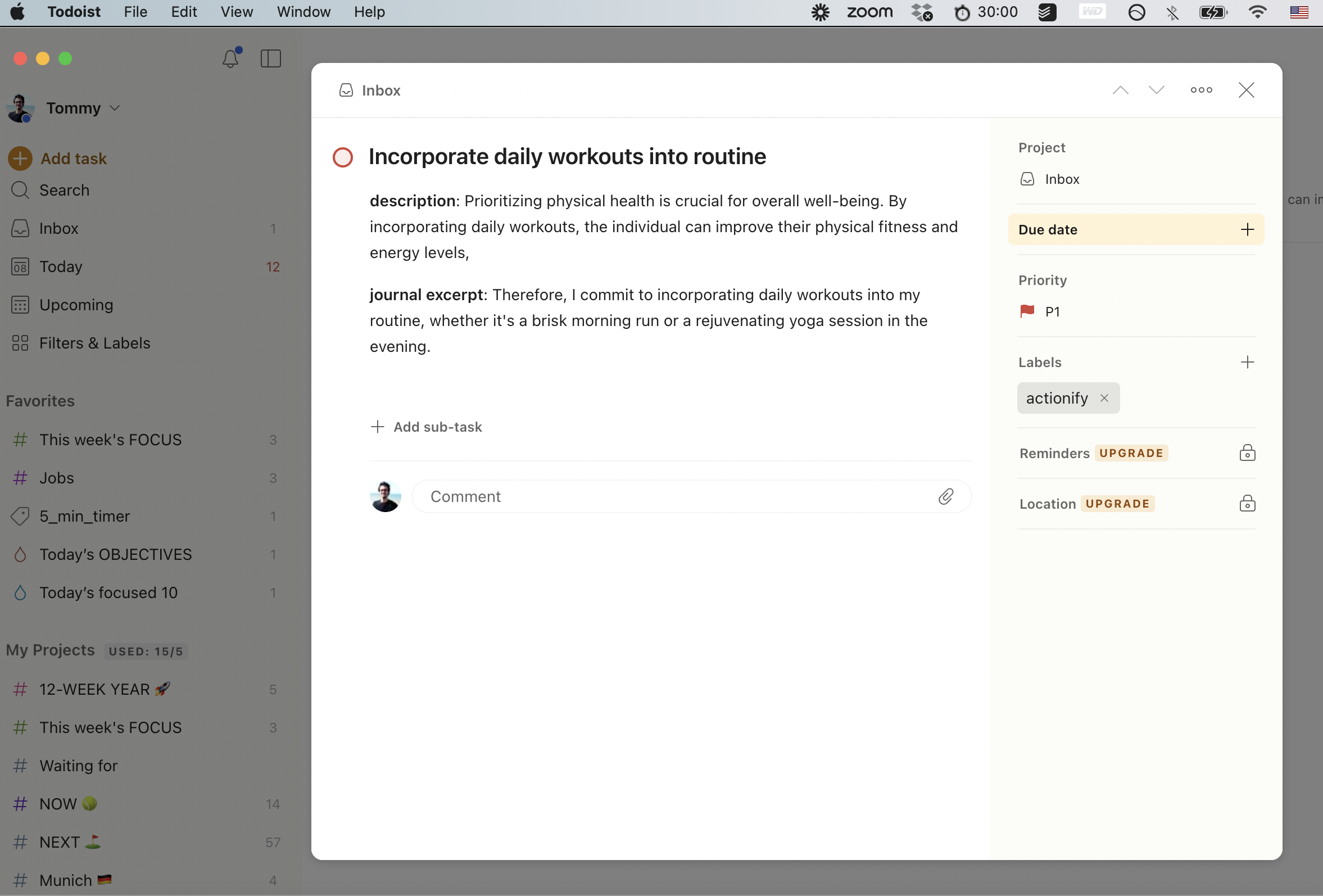
As you can see, the task has been created with useful metadata.
Zooming out from Actionify, we have the following generic process:
The “human in the loop” pattern is still necessary, as we can’t rely on LLM to extract the right data each time and trigger downstream processes with that data.
But this still opens lots of possiblities: we used to be limited to connect apps with structured data only, for example using Zapier to connect a trigger in google sheets with an action in gmail. But now with LLM we can explore new possibilities connecting processes generating unstructured data, for ex. speech, free text, files…
Other potential use cases:
These are just a few examples, as the posssibilities are endless. Happy innovating!